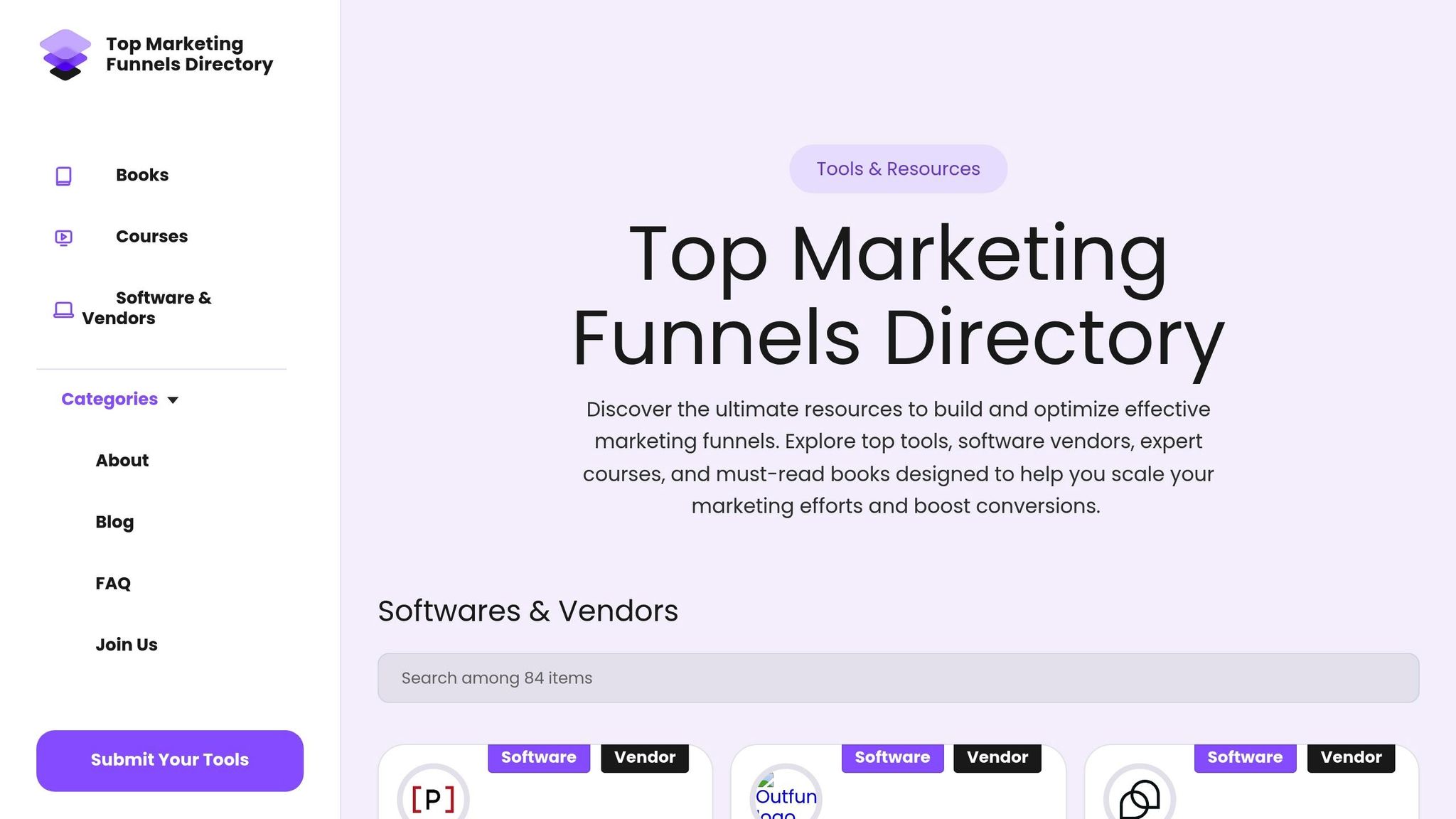When sales and marketing teams aren't aligned, businesses lose leads, waste resources, and slow down sales cycles. Project managers can fix this by acting as connectors between the teams, ensuring collaboration and efficiency. Here's how they do it:
- Set shared goals: Align sales and marketing around a unified revenue target and clear metrics.
- Use integrated tools: Adopt shared systems like CRMs and marketing platforms to improve communication.
- Streamline lead handoffs: Define clear steps and criteria for moving leads through the funnel.
- Improve communication: Organize regular meetings, share updates, and centralize resources.
- Develop skills and resolve issues: Offer cross-training and quickly address conflicts.
The result? Higher-quality leads, faster sales cycles, lower costs, and a smoother customer experience. Project managers bridge the gap, helping both teams work together to drive growth and improve performance.
How To Better Align Sales & Marketing In A Modern B2B ...
Sales and Marketing Team Gaps
Sales and marketing often work toward the same business goals but remain disconnected, creating challenges for B2B organizations. For project managers, recognizing these gaps is the first step to finding effective solutions.
Why Sales and Marketing Teams Disconnect
Several organizational issues lead to misalignment between sales and marketing:
Conflicting Goals: Sales teams aim to close deals and hit revenue targets, while marketing focuses on generating leads and building engagement. These differing priorities can lead to a lack of coordination.
Communication Challenges: Both teams often rely on separate tools and systems:
- Sales teams use CRM platforms and sales enablement tools.
- Marketing teams depend on automation platforms and content management systems.
- Without proper integration, these tools create silos and limit collaboration.
Timing Issues: Marketing typically focuses on long-term campaigns like lead nurturing and brand development, while sales prioritizes short-term goals like closing deals within a quarter. This mismatch can create friction over resource allocation.
How Misalignment Impacts the B2B Funnel
When sales and marketing aren't aligned, the B2B funnel suffers in several ways:
Lower Conversion Rates: Poor collaboration affects lead quality:
- Marketing may pass on leads that don’t meet sales criteria, leaving them ignored.
Higher Costs: Misalignment often results in wasted resources:
- Teams may use overlapping tools or duplicate efforts in content creation.
- Lead-handling inefficiencies add unnecessary expenses.
Workflow Problems: Disjointed processes disrupt operations:
- Leads may not be followed up promptly.
- Messaging can become inconsistent across customer interactions.
- Poor handoff procedures slow the sales cycle.
| Impact Area | Common Issue | Business Effect |
|---|---|---|
| Lead Quality | Misaligned qualification criteria | Fewer conversions |
| Resource Usage | Duplicate tools and efforts | Increased costs |
| Process Flow | Inefficient handoff procedures | Longer sales cycles |
| Customer Experience | Inconsistent messaging | Lower trust and engagement |
Project managers play a key role in bridging these gaps. By addressing these challenges, they can help align sales and marketing efforts, improving overall funnel performance and collaboration.
5 Ways to Connect Sales and Marketing
Once you've identified gaps between your sales and marketing teams, there are practical steps you can take to bring them together. These strategies help align their efforts and create a more seamless partnership.
Set Shared Goals and Metrics
Create a unified revenue target and clear performance metrics that both teams can work toward. Instead of sticking to basic lead scoring, focus on tracking how marketing efforts directly contribute to sales outcomes. For example, monitor how Marketing Qualified Leads (MQLs) move to become Sales Qualified Leads (SQLs) within a single measurement system.
Use Integrated Tools and Systems
Adopt a shared CRM system to keep everyone on the same page. Pair it with a marketing automation platform to simplify communication and daily workflows. This ensures both teams have real-time access to customer data, campaign performance, and interaction history.
Clearly Outline Lead Handoff Steps
Map out the lead journey from the first interaction to the final sale. Define specific qualification criteria for each stage of the process. By documenting these steps, you can make the lead handoff smoother and address any bottlenecks quickly. This clarity helps both teams stay aligned and efficient.
sbb-itb-a84ebc4
Project Manager Tasks for Team Alignment
Project managers play a key role in ensuring sales and marketing teams work together effectively, addressing collaboration challenges and bridging team gaps.
Managing Team Communication
To keep everyone on the same page, project managers need to set up clear communication systems:
- Regular sync meetings: Bring sales and marketing leaders together to review campaign results, assess lead quality, and plan upcoming initiatives.
- Shared documentation: Provide centralized access to essential resources like campaign briefs, buyer personas, and sales enablement tools.
- Cross-team updates: Share newsletters that highlight achievements, address challenges, and track progress toward shared objectives.
These steps help prevent information silos and keep everyone informed and aligned.
In addition to communication, addressing training needs and resolving conflicts quickly are key to maintaining team harmony.
Training and Issue Resolution
Project managers should proactively identify potential conflicts and ensure the team is equipped with the right skills:
- Skills development: Host cross-training sessions to familiarize marketing teams with sales processes and teach sales teams how to leverage marketing content effectively.
- Conflict management: Set up clear escalation paths and feedback systems to resolve issues fast and keep operations running smoothly.
Results of Sales-Marketing Alignment
When project managers bring sales and marketing together, the entire B2B funnel sees measurable improvements. These outcomes build on efforts to create seamless processes between the two teams.
Higher-Quality Leads and Increased Sales
Aligned teams produce better leads that close faster. Key factors driving this include:
- Refined lead scoring to improve targeting
- Marketing content tailored to address sales-identified challenges
- Clear handoff procedures that enhance conversion rates
This real-time collaboration helps refine both targeting and messaging.
Faster Sales Cycles and Reduced Costs
Strong teamwork between sales and marketing leads to shorter sales cycles and cost savings:
- Consistent messaging speeds up deal closures
- Marketing materials directly support sales efforts
- Duplicate outreach is eliminated, making processes more efficient
Enhanced Customer Experience
When marketing and sales work in sync, the customer journey becomes smoother:
- Unified messaging across all touchpoints
- Sales teams equipped with tailored materials for key buying stages
- Shared insights into prospect needs
- Seamless transitions between marketing and sales interactions
This coordination ensures customers receive relevant information at the right time, building trust and simplifying their decision-making process. As teams align, they gain a deeper understanding of customer needs, fostering stronger relationships and better retention.
Conclusion
Aligning sales and marketing teams is crucial for driving success in the B2B funnel. Project managers play a central role in bringing these teams together through structured processes, clear communication, and consistent tracking. When alignment is achieved, companies see better lead quality, faster sales cycles, and smoother customer experiences thanks to unified messaging and efficient lead management. For additional support, check out the resources below.
Marketing Funnels Directory Resources

The Marketing Funnels Directory provides a range of resources tailored for improving B2B funnel performance and fostering collaboration between sales and marketing. These include tools for lead management, platforms for team collaboration, and guides on building effective cross-functional processes. These resources equip project managers with frameworks to better align teams and enhance overall funnel performance.


